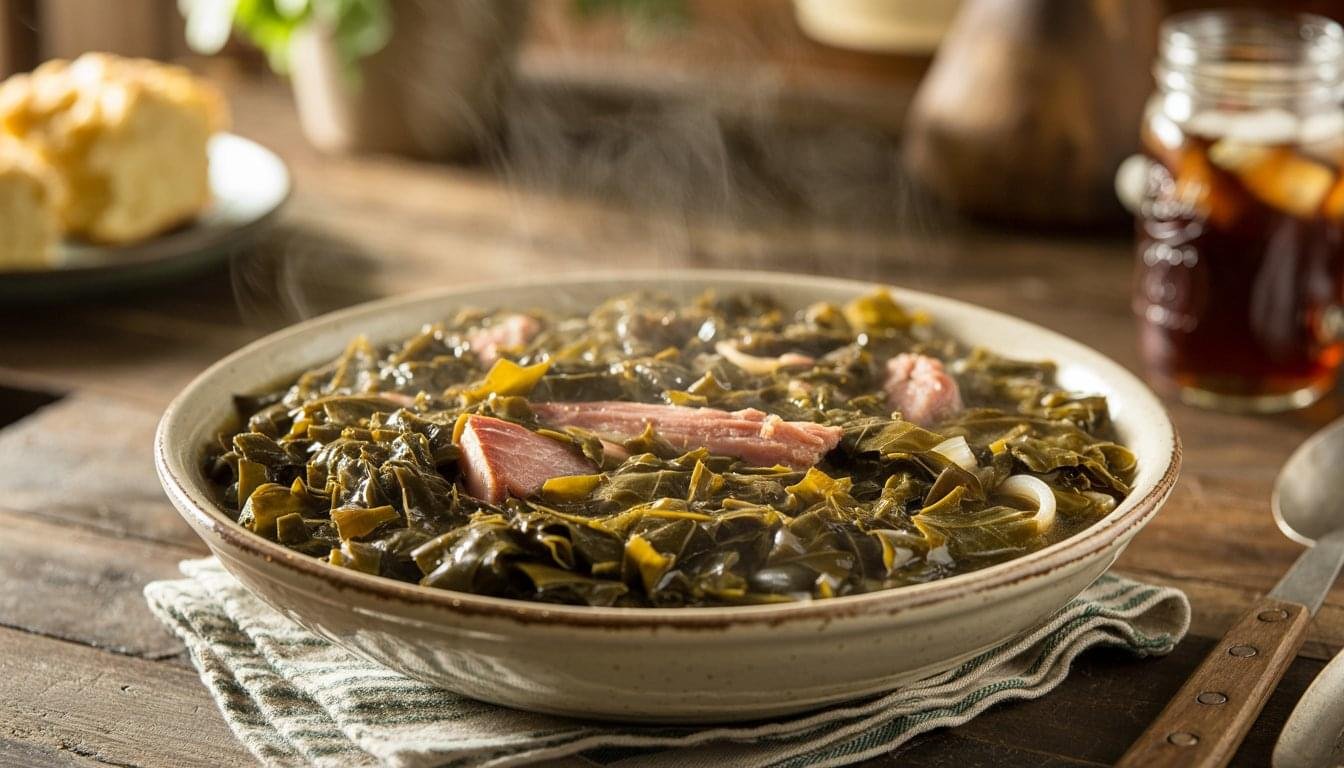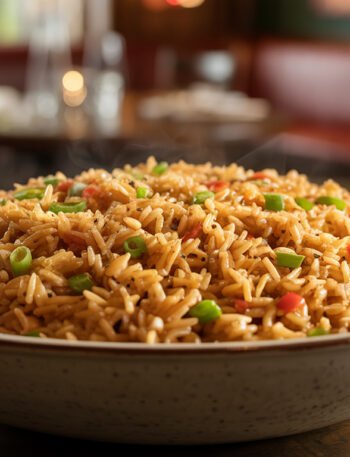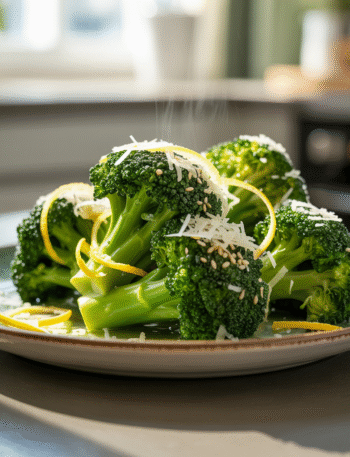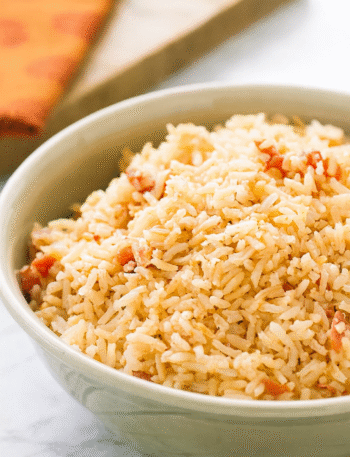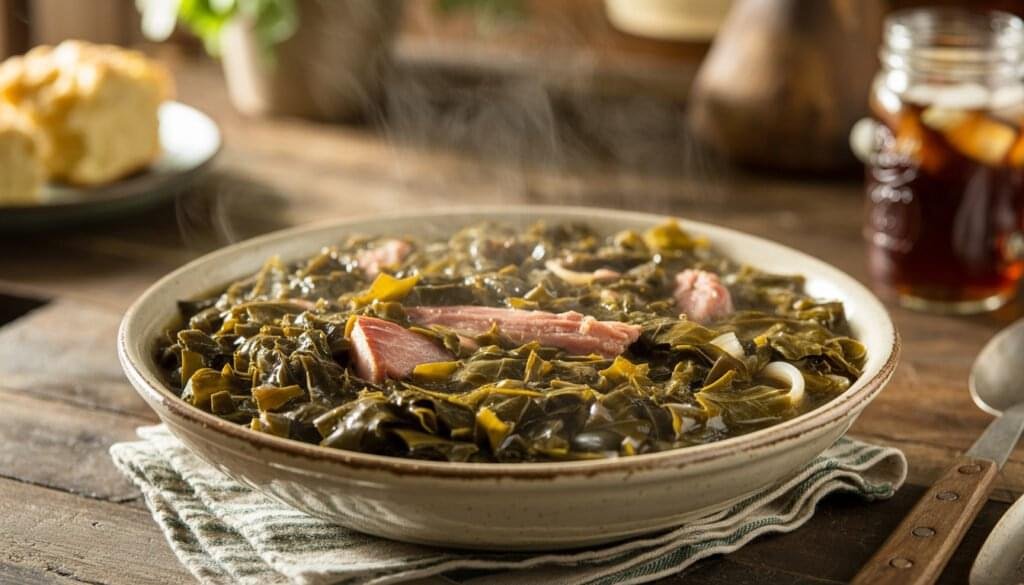
There’s nothing like a classic collard greens recipe, and, served as a side along with delicious fried catfish, it’s so much more than a side dish – it’s also a spine to what yourself, and your mom, and your grandmother and probably her grandmother, served to their family around the dinner table. These slow-cooked Southern collard greens are transformed, from tough, bitter leaves, into a rich-tasting and tender comfort food, made with care and seasoning. And this complete guide is going to show you exactly how to make real collard greens like you’d find in any good Southern cook’s kitchen. From novice to master, this restaurant-quality bean recipe is sure to please.
Essential Ingredients
Main Ingredients (Serves 6-8):
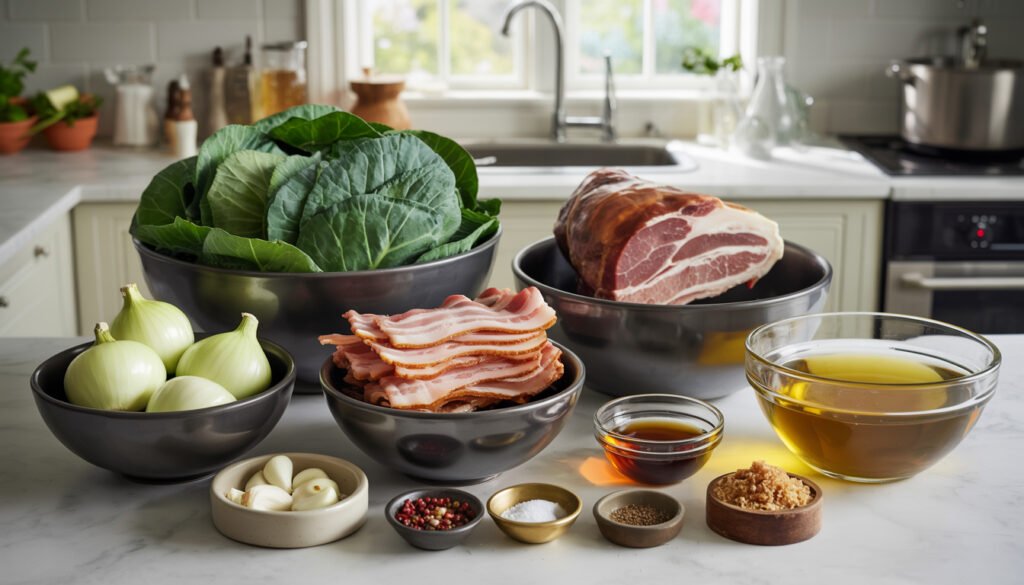
- 2-3 pound fresh collard greens (or 2 bags pre-washed)
- 1 large smoky ham hock or 4-6 thick slices of bacon
- 1 large yellow onion, diced
- 4-6 cloves garlic, minced
- 6-8 cups low-sodium chicken broth
- 1-2 tsp apple cider vinegar (add at the end)
- 1 tablespoon brown sugar
- 1 teaspoon red pepper flakes
- Salt and freshly crushed black pepper to taste
Optional Flavor Enhancers:
- For more smokiness, use smoked turkey necks
- Bay leaves for depth
- Hot sauce for heat
Step-by-Step Cooking Process
Step 1: Clean and Prepare Thoroughly
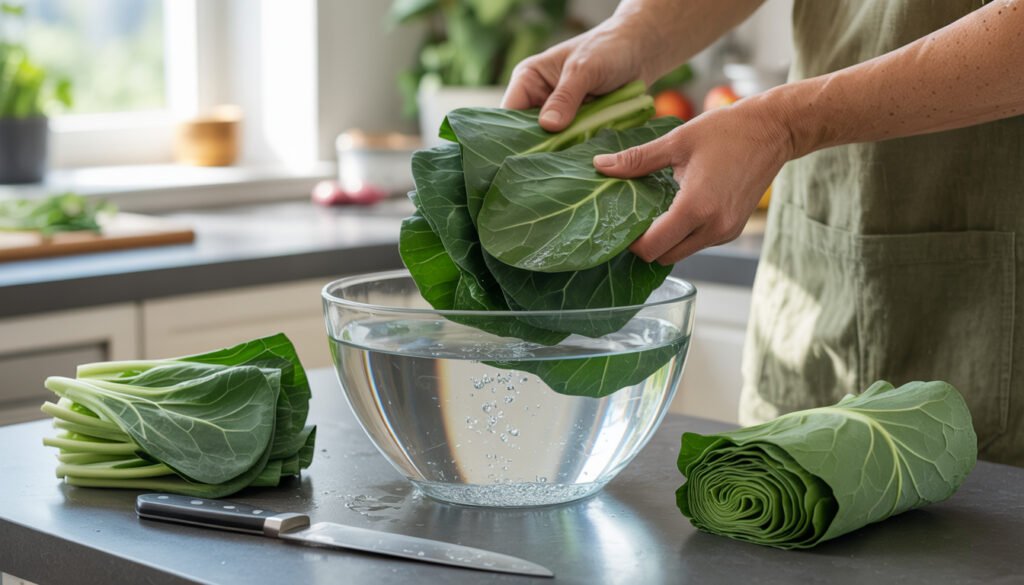
To begin, give your collard greens a good wash. Even bagged pre-washed greens will benefit from a rinse. Fill a large bowl with water and cover the leaves. Swirl it around a bit and change the water two to three times until there is no grit at the bottom. Trim out thick stems by folding the leaves in half lengthwise, then cutting along the stem. Layer a bunch of clean leaves and roll them up like a cigar and cut them into 1-inch pieces.
Step 2: Build the Flavor Base
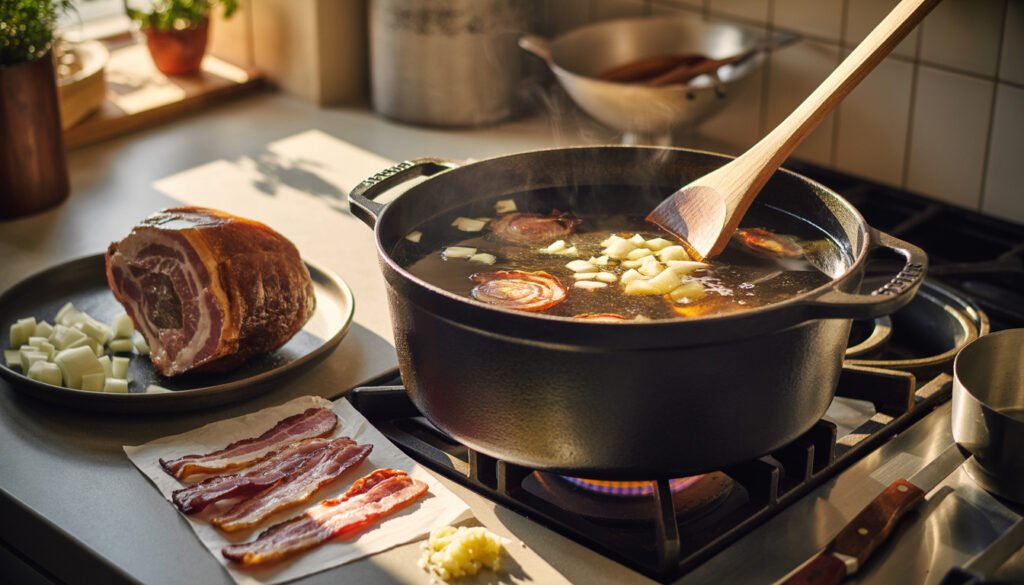
In a large (preferably heavy) pot or dutch oven, cook bacon over medium heat, until crispy (6-8 minutes). If using ham hock, brown all over. Take meat out and reserve, leaving the fat in the pot. Drain the pot and add diced onion and cook until onion is translucent (5 minutes). Stir in minced garlic and cook 1 minute more or until fragrant.
Step 3: Add Greens and Liquid
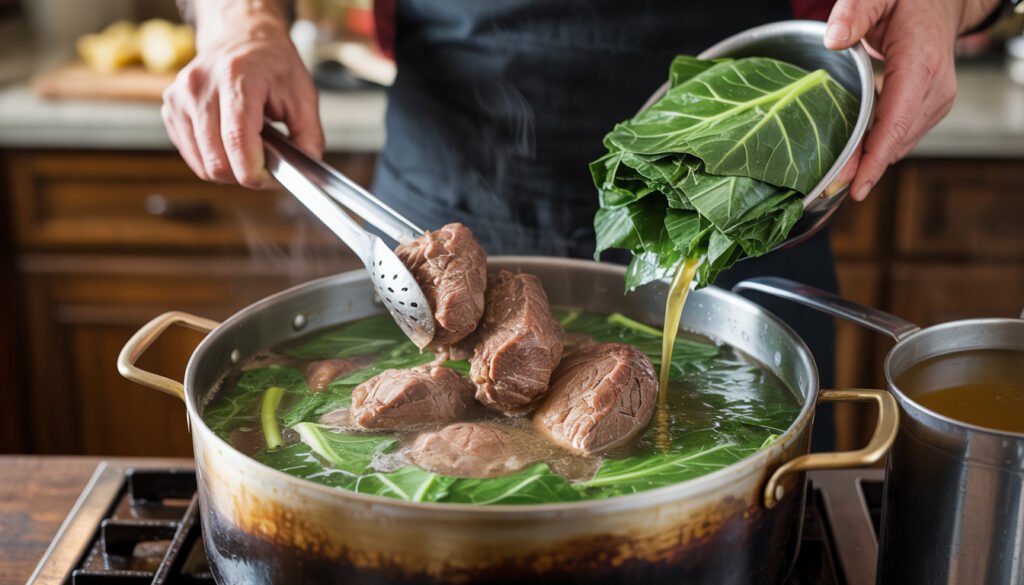
Return your meat to the pot. Add the collard greens in batches – they’ll wilt to half their size. Add just enough of the chicken broth to barely cover the greens (you may not use all 8 cups).
Step 4: Season and Simmer
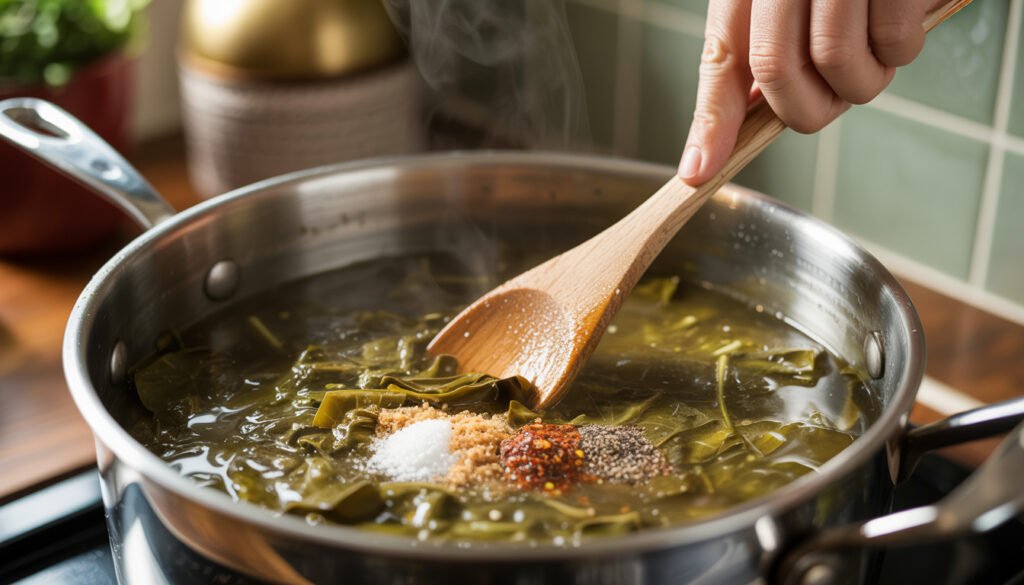
Stir in brown sugar, red pepper flakes, salt and pepper. Bring to a simmer; reduce heat to low. Cover and cook 1.5-2 hours until greens are tender.
Step 5: Final Seasoning
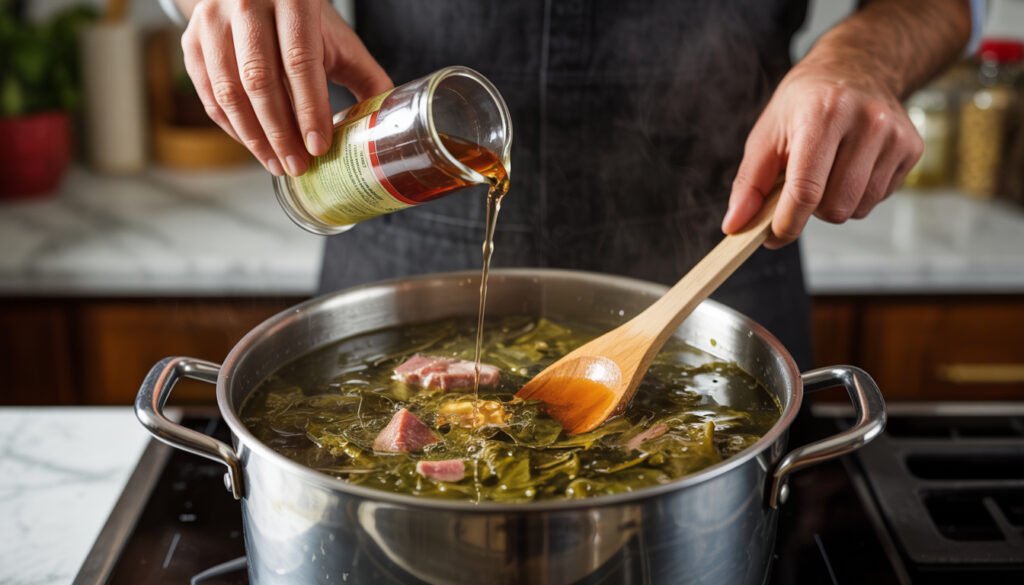
In the last 10 minutes of cooking stir in 1 to 2 teaspoons of apple cider vinegar for a pop of brightness. Season to taste and add more seasonings to taste.
Nutritional Value and Health Benefits
A single one cup serving of cooked collard greens (190g) is packed with nutrition:
- Vitamin K: 772.5 mcg (644% of the daily value) – essential for bone health
- Vitamin A: 722 µg RAE (80% DV) – eye health and immune function
- Vitamin C: 34.6 milligrams (38 percent DV) – essential nutrient that supports the immune system
- Calcium: 268 mg (21% DV) – strengthens bones
- Fiber: 7.6 g (27% DV) – supports healthy digestion
- Iron: 2.1 mg (12% DV) – for blood support
- Folate: 30 mcg (8% DV) – necessary for cell division
Collard greens are rich in vitamin K and vitamin A, and are good sources of vitamin C, calcium and fiber. Serve with the pot liquor (liquids in which something has been cooked), as some of the water-soluble vitamins may have leached out during cooking.
Serving Size and Suggestions
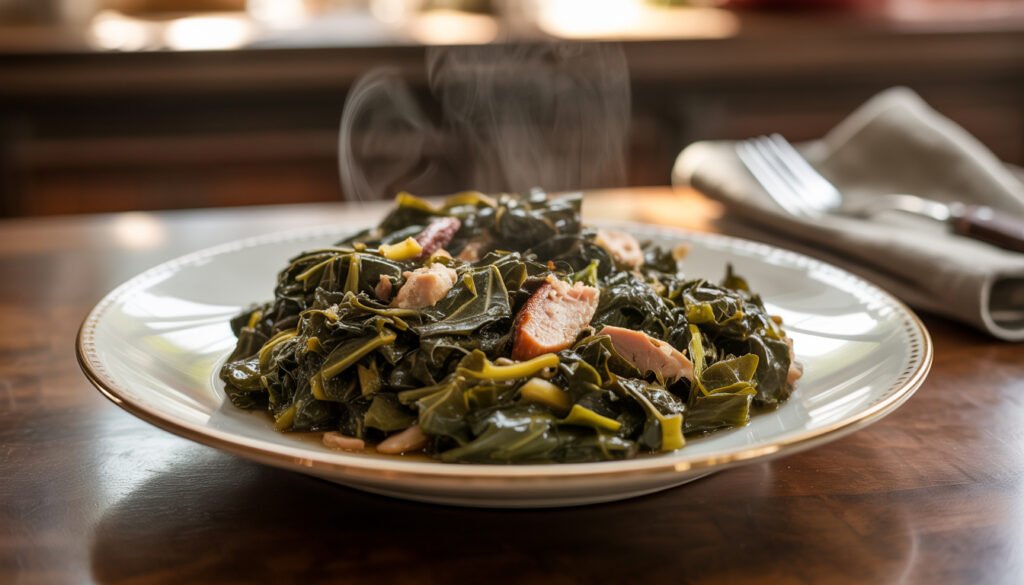
This collard greens recipe makes a side dish for 6-8, with each serving being approximately 1 cup cooked greens.
Perfect Pairings:
- Cornbread to sop up the flavorful pot liquor
- Fried or baked chicken
- Mac and cheese
- Black-eyed peas and rice
- Barbecue ribs or pulled pork
It’s always served with the pot liquor, and, to many, that’s the best part for dunking in cornbread or drizzling over rice.
Storage and Food Safety
Refrigerator Storage: Collard greens leftovers
Leftover collard greens should be stored for 3-4 days in an airtight container in the refrigerator, according to USDA recommendations for cooked leftovers. Add a little pot liquor to moisten greens.
Freezer Storage:
For longer, freeze collard greens for 3-4 months. Divide into freezer bags with pot liquor, making sure to leave room for expansion.
Reheating:
Reheat gently on the stovetop over a low flame, supplementing with a splash of broth if necessary. This is a better way to preserve texture than zapping in the microwave.
Tips for Perfect Results
Cleaning Best Practices
Even pre-washed collards need some cleaning. Rinse with cold water and repeat until water runs clear. Gritty greens will ruin your end result.
Seasoning Strategy
Go easy on the salt in the beginning; the ham hock or bacon will lend the dish saltiness as it cooks. Check the taste after an hour and slowly add more seasoning.
Heat Level Control
Crushed red pepper flakes, for a touch of heat. For smokier heat, use chipotle powder in place of the smoked paprika (which will provide you smoke but not much heat unless it’s marked “hot”).
Timing Matters
Don’t rush the cooking process. Collard greens the old fashioned way need at least 1.5-2 hours to get tender at all.
Recipe Variations
Vegetarian Version
Substitute oil for the meat and use vegetable stock. Toss in some smoked salt or liquid smoke for a classic flavor.
Spicy Style
Add diced jalapeños with the onions, or use andouille sausage in place of ham hock for Cajun-style spicy collard greens.
Quick Method
For a faster dish, uncovered at a hotter temperature 45-60 minutes or so, but the texture is different than a traditional long cooked green.
Conclusion
This collard greens recipe brings together traditional methods along with some easy shortcuts to make a delicious side that pairs with any of your Southern meals! It’s all in prep and good ingredients and with a bit of patience, it’s possible even for people who don’t cook much. Great collard greens, of course, as with all “below-the-mason-Dixon” treats, benefit from aging — they are sometimes even better after 24 hours, once the flavours get to know each other. Nail this recipe and you’ll have a comfort food you can turn to that warms any table.
Frequently Asked Questions
Q: Can frozen collard greens be used instead of fresh?
A: Yes, you can use frozen collard greens. Thaw completely and press out any extra water before transferring to the pan.
Q: Why wait until the end to add vinegar rather than simply cooking with it?
A: The vinegar can slow down the tenderizing. Add it in the last 10 minutes for brightness without affecting texture.
Q: How will I know when collard greens are done?
A: Well-cooked greens should be tender enough to cut with a fork, but not so soft they’re mushy. This usually takes 1.5~2 hours of gentle simmer.
Q: Is there a way I can put this together in the slow cooker?
A: Yes, brown the meat and onions before combining them with the slow cooker. Cook on low for 4-6 hours.
Q: What separates collard greens from other leafy greens?
A: Collard greens have much thicker, tougher leaves than spinach or kale, so they take longer to cook into tenderness.
